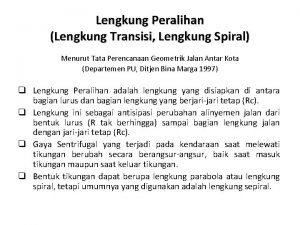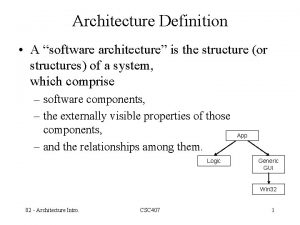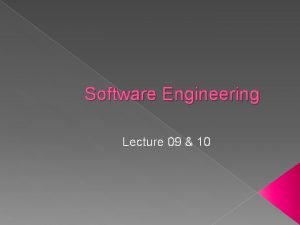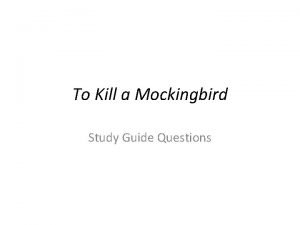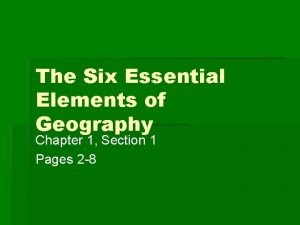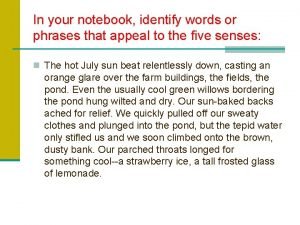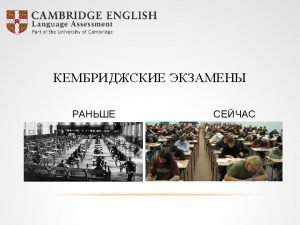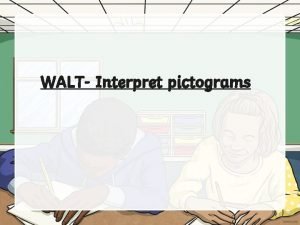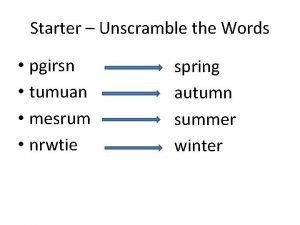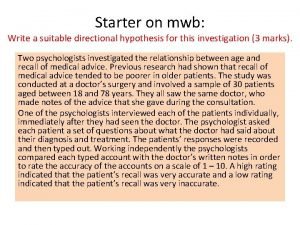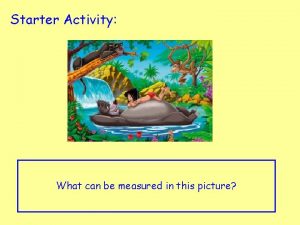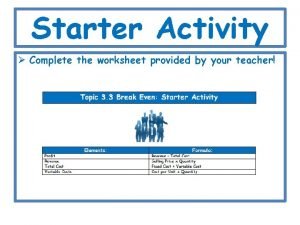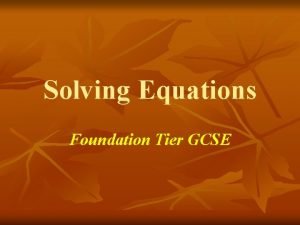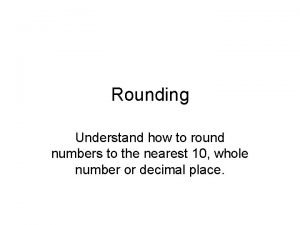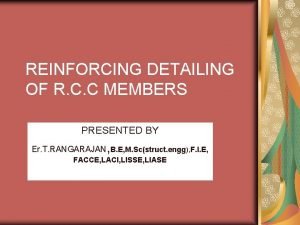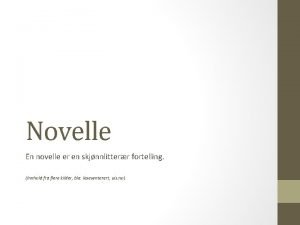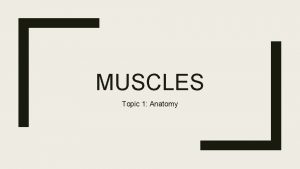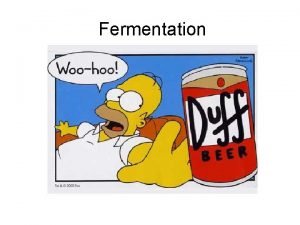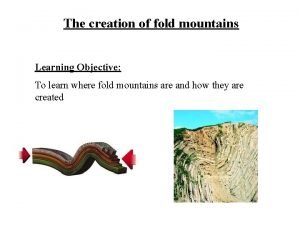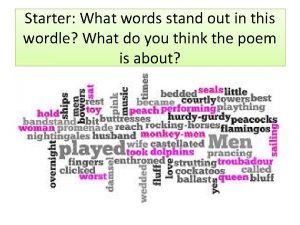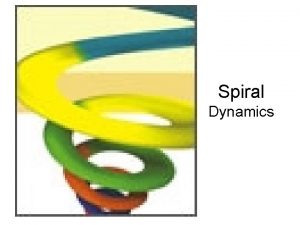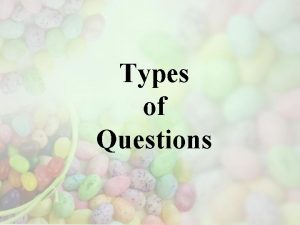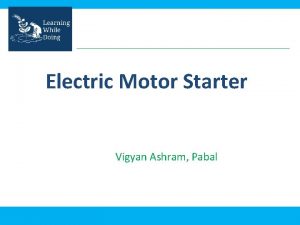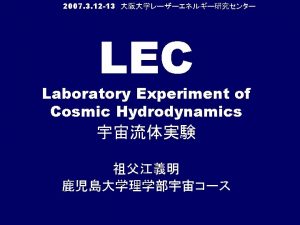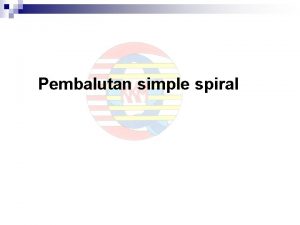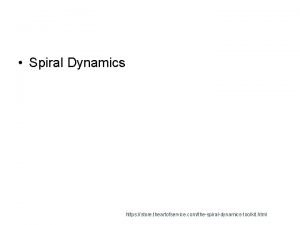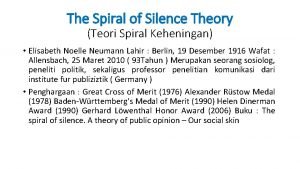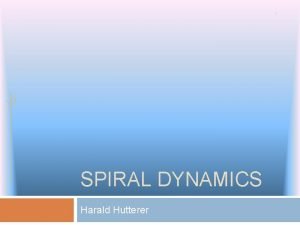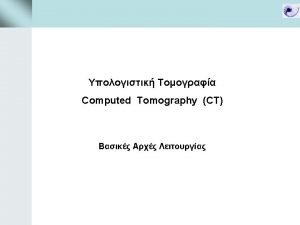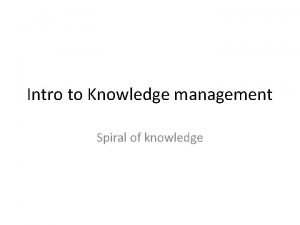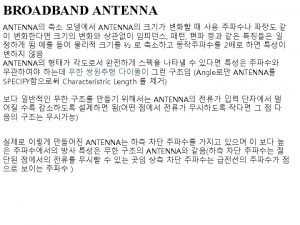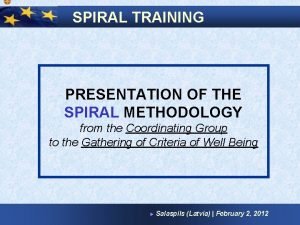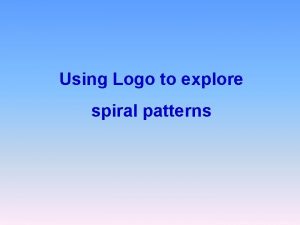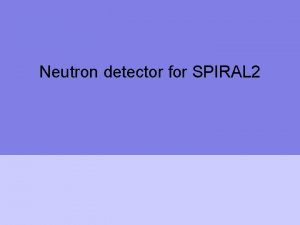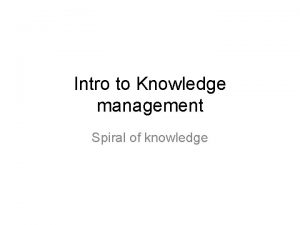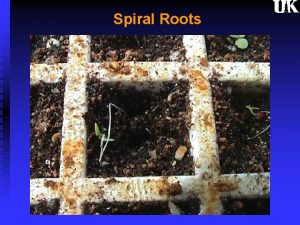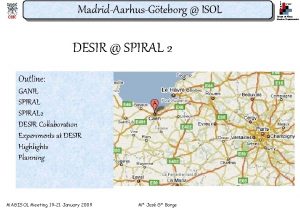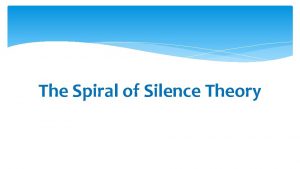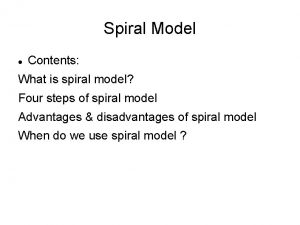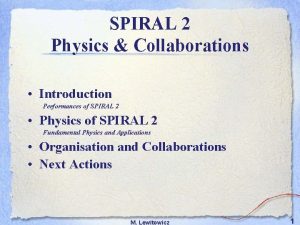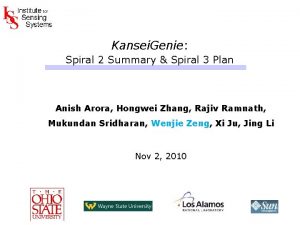Spiral questions Starter Q 1 identify two types
























- Slides: 24

Spiral questions - Starter

Q 1) identify two types of conformity Q 2) what was the percentage of people conforming in Asch’s study? Q 3) (Anxiety and EWT) What was the percentage of correct identifications for people who saw the confederate holding a knife, and what was it for the confederate holding the pen? Q 4) What percentage of children had secure, insecure avoidant and insecure resistant attachments? Q 5) identify three differences between an insecure resistant and a secure child

Q 6) identify two behavioural symptoms of depression Q 7) what two types of conditioning explain the twoprocess explanation of phobias Q 8) Give two behavioural treatments for phobias Q 9) What three factors make up Beck’s negative triad explanation of depression? Q 10) what does the ABC stand for in Ellis’s model of depression?

A psychologists wanted to find out whether eating a healthy breakfast would increase concentration at school. In an experiment she studied two groups of 11 year olds for two weeks. One group were asked to eat fruit and low fat cereal with skimmed milk every day, and the other group were asked to eat a fried breakfast at least four times a week. She found no difference in test results between the two groups of children. Q 11) identify the IV Q 12) operationalise the DV Q 13) what research method was being used in the study above? Q 14) what ethical concerns arise? Q 15) why should the groups be randomly allocated to conditions?

Answers Q 1) identify two types of conformity compliance, identification, internaliastion Q 2) what was the percentage of people conforming in Asch’s study? 32% Q 3) (Anxiety and EWT) What was the percentage of correct identifications for people who saw the confederate holding a knife, and what was it for the confederate holding the pen? 33% and 49% Q 4) What percentage of children had secure, insecure avoidant and insecure resistant attachments? 66% 22% 12% Q 5) identify three differences between an insecure resistant and a secure child 1) IR do not freely explore their surroundings, whereas Sec will explore using the caregiver as a safe base 2) IR will resist comfort from caregiver when they return, whereas Sec will be quickly calmed by caregiver 3) IR will show a great deal of stranger anxiety and separation distress, whereas sec will show moderate distress

Answers Q 6) identify two behavioural symptoms of depression. reduced level of activity, lethargy, psychomotor agitiation, sleep disturbance, eating disturbance, self harm and suicide attempts Q 7) what two types of conditioning explain the two-process explanation of phobias Classical and Operant Q 8) Give two behavioural treatments for phobias Flooding and systematic desensitisation Q 9) What three factors make up Beck’s negative triad explanation of depression? The self, the world, the future Q 10) what does the ABC stand for in Ellis’s model of depression? Activating event, belief about the event, consequence of the belief

A psychologists wanted to find out whether eating a healthy breakfast would increase concentration at school. In an experiment she studied two groups of 11 year olds for two weeks. One group were asked to eat fruit and low fat cereal with skimmed milk every day, and the other group were asked to eat a fried breakfast at least four times a week. She found no difference in test results between the two groups of children. Q 11) identify the IV Whether children eat fruit and low fat cereal with skimmed milk every day or eat a fried breakfast at least four times a week Q 12) operationalise the DV childrens’ scores on an academic test Q 13) what research method was being used in the study above? Field experiment Q 14) what ethical concerns arise? Causing harm to the participants, informed consent, anonymity. Q 15) why should the groups be randomly allocated to conditions? To limit any risks for potential bias between the two groups of children

The structure and function of sensory, relay and motor neurons

Starter: nervous system • Draw the nervous system. • Bullet point the main functions

Task 1: Neurons Independently read the information about neurons and what they do. Task: develop between 5 -7 questions that can be answered by your colleagues. Make then increase in difficulty if possible

Task 2: The Synapse Task 2: Checking learning a) Draw a synapse (don’t use notes) b) Label the Synapse using these terms (don’t use notes) Pre-synaptic membrane; post-synaptic membrane; vesicles; synaptic cleft; Direction of impulse; receptor sites; neurotransmitter crossing cleft

The process of synaptic transmission 1. Read about synaptic transition from your pack 2. Summarise the main points under your diagram, highlighting the keywords.

Task 3: The three main types of neurons Research the below terms: Cell body Axon Synaptic endings Dendrites Myelin sheath Nodes of Ranvier Schwann cells

Task 3: The three main types of neurons Task a : You need to learn the three different types of neuron that exist. Using the worksheet, read the information about the three main types of neuron. Task b: after you have read the information, make a note of where the structures (listed below) are situated in each neuron, and the direction of electrical impulse. Cell body Axon Synaptic endings Dendrites Myelin sheath Nodes of Ranvier

The three main types of neurons • Task 3 – label the diagram using the terms sensory neurons, motor neurons and relay neurons. Try not to use notes until your are really stuck • Task – look at questions a – j. Without using your notes, try to decide of they are true or false. If false, delete and add the correct information

Structure of each neuron You will need to identify the main structures of each neuron for the exam Task 3: fill in the gaps using the terms provided. If you don’t know, follow this pattern to help you a) b) c) d) Think hard and fill in the ones you do know Ask colleague Check notes Ask teacher

Add detail to your knowledge You may be asked a question such as this Explain how information travels from a sense organ (such as the eye) to an effector (such as a bicep) – 6 marks Task 4: To answer this, complete the reading and answer the questions. If you finish quickly, complete the extra questions Challenge: If you really understand this, try and answer the question above. See the next slide for a model answer

Explain how information travels from a sense organ (such as the eye) to an effector (such as a bicep) 6 marks Information is received from a sense organ and passes through the sensory neuron. It is detected by the dendrites and an electrical impulse is passed towards the CNS via the cell body. The impulse is then passed along the axon to the terminal axons, where neurochemicals are released across the synapse and detected by the receptor sites in the dendrites of the relay neurons. The impulse continues across the dendrites, cell body, axon and axon terminals of the relay neuron, and chemicals are released across the synapse between the relay and the motor neuron. The electrical impulse then moves away from the CNS towards the important effector via the dendrites, cell body and axon of the motor neuron, until chemicals are released at the motor end plate which inform the muscle to act.

Plenary Write five quiz questions about the lesson that you could ask the members of your small group. Each person askes their questions and everyone else answers. The person with the highest correct number of answers wins.

On big boards-The three main types of neurons Task 1: Label which neuron is represented in the diagram below (A, B, C).

True or false? If false, make the corrections. 1. Motor neurons send signals from the CNS to the muscles and glands 2. Muscles and glands are sometimes called effectors 3. Sensory neurons often have short dendrites and short axons 4. The CNS is consists entirely of motor neurons 5. Relay neurons are also known as interneurons 6. Sensory neurons send signals to the brain and spinal cord from the sense organs 7. Relay neurons only connect to sensory neurons 8. Relay neurons can connect to other relay neurons 9. There are gaps between the connections of neurons

Structure of each neuron Task 2: On mini-whiteboards: 1. What type of neuron is this? 2. write the key structures of each neuron. What is the direction of impulse (in other words, which way is the signal travelling)? 2 1 3 6 5 4 7

On mini-whiteboards: 1. What type of neuron is this? 2. write the key structures of each neuron. What is the direction of impulse (in other words, which way is the signal travelling)? 1 2 3 6 7 5 4

1 On mini-whiteboards: 1. What type of neuron is this? 2. write the key structures of each neuron. What is the direction of impulse (in other words, which way is the signal travelling)? 2 3 4
 Lengkung spiral spiral
Lengkung spiral spiral Structure architecture definition
Structure architecture definition Fountain model in software engineering
Fountain model in software engineering Why did miss caroline punish scout
Why did miss caroline punish scout 6 essential elements of geography
6 essential elements of geography In your notebook identify what
In your notebook identify what Starters movers flyers ket pet fce cae
Starters movers flyers ket pet fce cae Pictogram starter
Pictogram starter Reichstag fire who was the fire starter
Reichstag fire who was the fire starter Starter unscramble
Starter unscramble Examples of directional hypothesis
Examples of directional hypothesis Starter background
Starter background Starter activity clipart
Starter activity clipart Starter activity
Starter activity Solving equations starter
Solving equations starter Rounding starter
Rounding starter Romeo and juliet starter activities
Romeo and juliet starter activities Secondary beam detailing
Secondary beam detailing Pakan babi grower
Pakan babi grower Virkemidler i novelle
Virkemidler i novelle Structure of skeletal muscle
Structure of skeletal muscle Midlife crisis starter pack
Midlife crisis starter pack Biological ennoblement
Biological ennoblement Formation of fold mountains
Formation of fold mountains Starter wordle words
Starter wordle words
